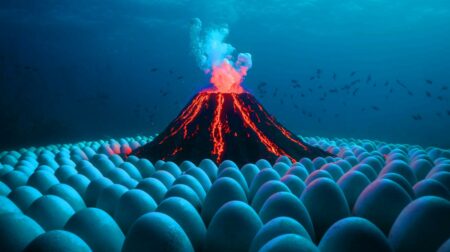New Zealand. Ah, that wonderfully scenic land of pristine forests, bubbly springs and verdant greenery all around. It’s a land where hobbits, elves and dwarves frolic in fairytale-like settings … on the silver screen, that is. In real life, a myriad of species inhabit the sparsely populated island nation, the very thought of which gladdens the heart of any environmentalist.
A blissful earthly haven this is, right? Wrong. It’s time we revised our rose-tinted view of the island nation’s natural bounty. According to a comprehensive new report by New Zealand’s government on the state of the environment, not all is well in the country’s forests and meadows. Far from it.
To wit: at least 75 species, mostly birds, have gone extinct since the islands were first settled by people seven centuries ago. Nor is the pace of extinction showing signs of slowing down. In the past 15 years alone another 86 species have come to be at increased risk of vanishing from the wild.

One major cause has been habitat loss. Once forests covered 80% of the country; today they cover a quarter of New Zealand. Newly introduced invasive species too have taken their toll on local biodiversity by arrogating the habitats of native species or outcompeting them for food. New Zealand’s dairy industry has been wreaking havoc with local biodiversity owing to unsustainable practices.
“It is undeniable that the dairy industry deserves the title of the dirtiest industry in New Zealand, and urgent action is required,” said Steve Abel, a senior campaign and political advisor for Greenpeace. “To turn this around, the government must institute policies that will lead to land use change, get rid of synthetic nitrogen fertilizer, dramatically reduce cow numbers, and invest millions into regenerative farming.”
In all, some 4,000 native species on the islands are facing threats to their continued existence on land, in water and in the air. As many as 90% of seabirds, 84% of reptiles, 76% of freshwater fish, and 46% of plants can be classified as threatened or endangered in New Zealand, whose ecosystem had evolved in isolation from the rest of the planet until people started arriving in droves.
“[T]he report is by its nature quite negative,” New Zealand’s Secretary for the Environment Vicky Robertson conceded. “It deliberately focuses on our biggest challenges.”
Some experts are warning that New Zealand is facing an environmental catastrophe unless drastic action is taken to save local biodiversity. Far more resources will need to be devoted to saving what’s left of the island nation’s flora and fauna, stresses Kevin Hague, CEO of the Royal Forest and Bird Protection Society.
“New Zealand is losing species and ecosystems faster than nearly any other country,” Hague said. “Four thousand of our native species are in trouble … from rampant dairy conversions to destructive seabed trawling – [we] are irreversibly harming our natural world,” he went on.
Yet despite the existential threats facing New Zealand’s biodiversity, adequate funding from the government for environmental protection measures has been wanting. “[C]ompared to the scale of the crisis that exists, it’s hard to escape the conclusion that while we’re putting money into in conservation and it’s not exactly a token gesture, [current funding] is far short of what is required,” Hague insisted.
Did you like it? 4.6/5 (27)








